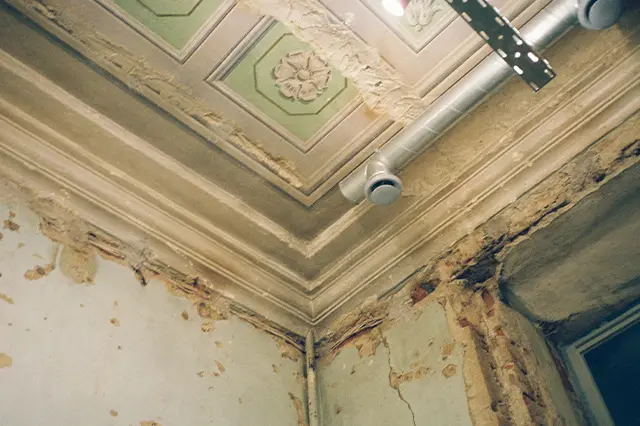MOLD REMEDIATION: What You Need To Know
Mold is one of the most common causes of health concerns and property damage. In fact, mold can grow anywhere there is moisture and warmth—including in your home, office, schools, and other buildings. To prevent mold from taking hold and spreading, it’s important to know how to remediate it. This is where Mold Removal Services come in. Mold Removal Services are experts at identifying and removing mold from all types of environments. From homes to offices to schools, our team will take care of the cleanup and repair necessary to restore your building back to its normal state. We know the importance of quick and effective mold remediation, so we work quickly and efficiently to get the job done right.
What is Mold?
Mold is a fungi that can cause serious health problems if it grows and spreads. It can form in any moist area, such as the inside of walls and ceilings, under flooring, and anywhere else moisture is present. Mold can also grow on surfaces that are exposed to air, such as wood or paper products.
If you think you may have mold growing in your home, there are a few things you should do:
1. Check the exterior of your home for signs of mold growth. If you see signs of mold, like patches of discolored or wet wood or wallpaper, contact a professional contractor to inspect the area and determine if remediation is necessary.
2. Check the interior of your home for signs of mold growth. If you see signs of mold growth, like black spots on sheet-rock or spore prints on white walls or ceilings, contact a professional contractor to inspect the area and determine if remediation is necessary.
3. Notice any unusual smells in your home? Mold can produce an odor that’s often strong and unpleasant. If you notice an odor in your home that doesn’t seem to be coming from any specific source, contact a professional contractor to inspect the area and determine if remediation is necessary.
4. Test for mold using an appropriately designed test kit (available at most hardware stores). If tests show evidence of mold growth, contact a professional contractor to inspect the area and determine if remediation is necessary.
Types of Mold
There are a few different types of mold that can cause health problems, depending on the type and severity of the infection. The most common types of mold are black mold, white mold, and filamentous molds. Black mold is the most common type and is often associated with contaminated air or water sources. White mold can be found on surfaces exposed to moisture, such as walls or ceilings. It is less common but can produce more serious health effects than black mold. Filamentous molds are common in damp environments, such as kitchens and bathrooms. They can produce allergens that can cause respiratory issues in people with severe allergies. Mold remediation usually involves cleaning up the affected area with a disinfectant and removing any visible evidence of the fungus.
How to Test for Mold
Testing for mold is one of the first steps in remediation. There are a few tests you can use to determine whether or not mold is present. A Visual Inspection of surfaces and materials may be enough to identify signs of mold. However, more specific and sensitive tests can also be used, including:
-The Indoor Air Quality Test (IAQT): This test measures the levels of certain pollutants in the air. Mold may produce these pollutants, so testing for them is an indicator that mold is present.
-The Yeast/Mold Test: This test uses Yeast cultures and fungal spores to see if there are any fungal colonies growing. Mold may produce these spores, so this test can indicate that mold is present.
-The Biometric Scanner for Mold: This scanner uses ultraviolet light and temperature to detect the presence of molds.
-The Toxicity Test: This test measures the levels of toxins in samples. Mold may produce these toxins, so testing for them is an indicator that mold is present.
-The Volatile Organic Compounds Test: This test measures the levels of volatile organic compounds (VOCs) in samples. Mold may produce these VOCs, so testing for them is an indicator that mold is present.
-The Carbon Monoxide Test: This test measures the levels of carbon monoxide in samples. Mold may produce this gas, so testing for it is an indicator that mold is present.
-The Fuel Oil Test: This test measures the levels of fuel oil in samples. Mold may produce this oil, so testing for it is an indicator that mold is present.
-The Water Test: This test measures the levels of water in samples. Mold may produce this water, so testing for it is an indicator that mold is present.
-The Air Quality Test (AQT): This test measures the levels of certain pollutants in the air. Mold may produce these pollutants, so testing for them is an indicator that mold is present.
-The Volatile Organic Compounds Test: This test measures the levels of volatile organic compounds (VOCs) in samples. Mold may produce these VOCs, so testing for them is an indicator that mold is present.
How to Remove Mold from Your Home
Mold is a problem that can affect any part of your home, but it’s especially common in bathrooms and kitchens. Mold can cause health problems, including allergies, asthma, and even cancer. It can also damage your home’s insulation, leading to costly repairs. Here are four steps you can take to remove mold from your home:
1. Check for Signs of Mold.
The first step is to check for signs of mold. If you notice any strange smells or visible patches on the walls or ceilings, it’s time to take action. Mold growth can be slow or fast depending on the conditions in which it grows, so don’t hesitate to call a professional if you have concerns.
2. Clean Up the Area Where Mold Is Growing.
Once you know where mold is growing, the next step is to clean up the area as best you can. This includes removing any debris or watery spots from the floor and walls where mold is growing. Once you clean up the area, make sure to seal all cracks and openings in the walls and ceiling with plastic sheeting or tarps to prevent future growth.
3. Vacuum Often to Clear Away Unwanted Moisture & Grains.
In addition to cleaning up areas where mold is growing, vacuum frequently to remove unwanted moisture and grains from your home’s surfaces. This will help prevent further damage from mold and keep your air conditioning and heating systems running smoothly.
4. Apply a Mold-Fighting Anti-fungal Cream.
If all of these measures fail to remove the mold, then consider using a mold-fighting antifungal cream. These creams are available over the counter or through a specialized pharmacy, and they work by attacking the mold directly. Be sure to follow the instructions carefully to avoid any unwanted side effects.
What to Do If You Find Mold in Your Home
If you find mold growing in your home, the first thing to do is to take pictures or make a video of the mold so that you can identify it accurately. Remember that different types of molds produce different colors and symptoms, so it’s important to be specific about what you see. If there are any visible signs of health hazards associated with mold, such as black patches on drywall or ceilings, then immediately call an expert to come and clean up the area. It’s also important to remember that if you experience respiratory problems or allergies due to exposure to mold, you should take appropriate precautions until the mold is cleaned up and the air quality in your home returns to normal.
What to Do If You Find It in Your Business or School
If you find mold in your business or school, here are some steps you can take to remediate the situation:
1. Remove all the contaminated material. This includes any furniture, insulation, drywall, etc.
2. Ventilate the area to prevent moisture and mold growth. Open windows and use fans to help circulate air.
3. Clean up the area using a Mold Removal Cleaning Kit or bleach solution and rags. Wear protective gear, such as gloves, a face mask, and boots.
4. Repair any damage done by the mold and clean up any residual debris.
5. Make sure the area is properly ventilated and monitored for mold growth.
6. Inform anyone who may have been exposed to the mold and advise them of the health risks involved.
7. Keep a written record of the incident and any remediation actions taken. This will help in the event of a future mold contamination.
If you have any questions about mold remediation or want to discuss a specific case, please contact our team.
Conclusion
If you live in an area where mold is a problem, the first step is to determine if you have any signs of moisture damage. If so, it’s important to act fast and call in a professional mold remediation team because even small amounts of moisture can cause extensive damage. Once you know for sure that there’s a problem with water infiltration or mold growth, take the necessary steps to clean up the affected areas as quickly and safely as possible.

